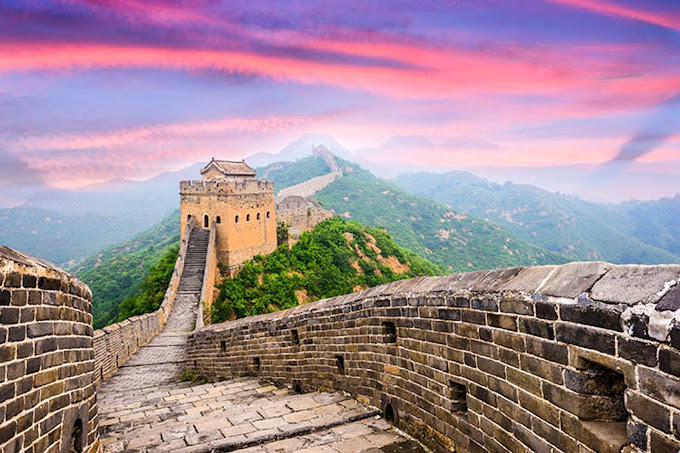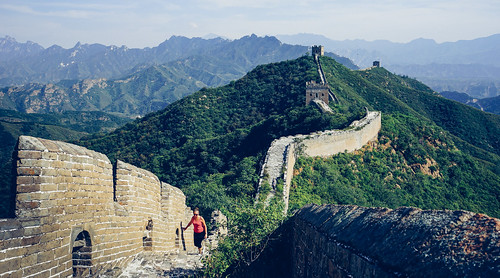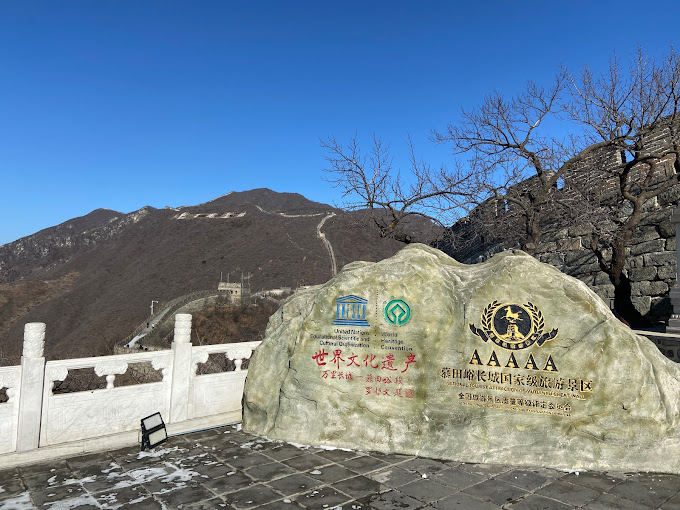What is the #1 most visited place in the world? Have you ever wondered which place attracts the highest number of visitors from around the globe? In this article, we will explore the answer to this question by delving into the criteria for determining the most visited place and revealing the #1 spot. So, let’s embark on a virtual journey to discover the incredible destination that tops the list! Read also: Travelling to New York for Tourism – All You must Know and Do
Introduction
Traveling is an enriching experience that allows us to explore diverse cultures, witness breathtaking landscapes, and create lasting memories. With countless remarkable destinations scattered across the globe, it can be challenging to determine the single most visited place. However, certain factors help identify the frontrunner in terms of global tourism.
The Criteria for Determining the Most Visited Place
When evaluating the popularity of tourist destinations, several factors come into play. These include the number of annual visitors, international recognition, cultural significance, historical importance, natural beauty, and architectural wonders. Combining these elements gives us a comprehensive overview of the most visited place.
#1 Most Visited Place: The Great Wall of China
Unveiling the top spot, we find the iconic and awe-inspiring Great Wall of China. Stretching over thousands of miles, this remarkable architectural wonder attracts an astonishing number of visitors each year. Let’s dive into the reasons behind its immense popularity.
Historical Significance and Cultural Importance
The Great Wall of China is not merely a physical barrier; it symbolizes the rich history and cultural heritage of China. Constructed over centuries, the wall served as a defensive fortification, protecting the Chinese empire from invasions. Its historical significance and cultural importance make it a must-visit destination for history enthusiasts and those eager to immerse themselves in ancient tales.
Spectacular Architecture and Engineering
One of the most captivating aspects of the Great Wall is its breathtaking architecture and engineering marvels. The wall showcases incredible craftsmanship, with each brick and stone meticulously placed to withstand the test of time. Its strategic design, watchtowers, and winding path along rugged landscapes leave visitors in awe of the human ingenuity that brought it to life.
UNESCO World Heritage Site
In recognition of its outstanding universal value, the Great Wall of China has been designated as a UNESCO World Heritage Site. This prestigious status further enhances its global recognition and draws in tourists seeking to explore the world’s most remarkable cultural and natural treasures.
Tourism and Visitor Experience
The Great Wall offers an unforgettable experience for tourists of all ages. Visitors can walk along its ancient pathways, marvel at the panoramic views, and absorb the aura of history that permeates the air. The wall’s accessibility and well-preserved sections allow travelers to immerse themselves in this extraordinary journey through time.
Major Sections of the Great Wall
The Great Wall of China stretches across vast expanses of land, encompassing multiple major sections. These sections differ in terms of accessibility, architectural features, and historical significance. Here are some notable sections of the Great Wall:
- Badaling: Located near Beijing, the Badaling section is the most popular and well-preserved segment of the Great Wall. Its proximity to the capital city makes it easily accessible for both domestic and international tourists.
- Mutianyu: Situated amidst picturesque landscapes, the Mutianyu section offers breathtaking views and is known for its lush greenery. It is a favorite among nature lovers and photographers.
- Jinshanling: Renowned for its stunning scenery, the Jinshanling section showcases the wall’s original appearance with well-preserved watchtowers and fortifications. It attracts visitors seeking a more rugged and authentic experience.
- Simatai: Offering a mix of restored and unrestored sections, Simatai provides a glimpse into the wall’s original state. Its challenging terrain and steep slopes make it an appealing destination for adventurous travelers.
- Huangyaguan: Located in Tianjin, the Huangyaguan section boasts a combination of natural landscapes and historical relics. Visitors can marvel at its unique features, such as the “Flying Eagle Facing Upward” watchtower.
Popular Sections for Tourists
While all sections of the Great Wall have their own charm, some sections have gained particular popularity among tourists:
- Badaling: Known for its accessibility and well-preserved condition, Badaling attracts a large number of tourists, especially first-time visitors to China. Its proximity to Beijing and convenient transportation options make it a convenient choice.
- Mutianyu: With its stunning scenery and well-maintained infrastructure, Mutianyu is a popular section for tourists seeking a picturesque and less crowded experience. Cable car rides and toboggan descents add to the allure.
- Jinshanling: Although less crowded than Badaling and Mutianyu, Jinshanling is gaining popularity for its breathtaking landscapes and original appearance. Visitors who prefer a more tranquil and authentic experience often choose this section.
- Simatai: Adventure seekers and history enthusiasts are drawn to the challenging terrain and authentic atmosphere of the Simatai section. Its partially restored and unrestored sections offer a unique glimpse into the wall’s past.
Challenges and Preservation Efforts
Preserving the Great Wall of China is a monumental task due to its sheer length and exposure to natural elements. Some challenges faced in the conservation of this iconic landmark include:
- Erosion and Weathering: Over time, wind, rain, and extreme temperatures can erode the structure and cause deterioration of the wall. Efforts are made to prevent further damage and restore the sections in need of repair.
- Urban Development: With expanding cities and infrastructure projects, some sections of the wall face the threat of encroachment and destruction. Balancing urban development and preservation requires careful planning and collaboration.
- Tourist Impact: The increasing number of tourists visiting the Great Wall puts strain on the structure and its surrounding environment. Measures are implemented to manage visitor flow, protect sensitive areas, and raise awareness about responsible tourism practices.
Preservation efforts involve a combination of restoration, maintenance, and educational initiatives. Organizations, government bodies, and local communities work together to ensure the longevity and cultural significance of this iconic monument.
Interesting Facts and Figures
Delving into the world of the Great Wall of China reveals intriguing facts and impressive figures:
- Length: The total length of the Great Wall spans approximately 13,171 miles (21,196 kilometers), making it one of the longest man-made structures in the world.
- Construction Timeline: The construction of the wall took place
What is the #1 Most Visited Place in the World?
Have you ever wondered which place attracts the highest number of visitors from around the globe? In this article, we will take a journey to discover the #1 most visited place: the Great Wall of China. We will explore its major sections, popular sections for tourists, preservation efforts, interesting facts and figures, its impact on the local economy and tourism industry, as well as other highly visited places around the world. Let’s dive in!
The Great Wall of China stretches across vast expanses of land, encompassing multiple major sections. These sections differ in terms of accessibility, architectural features, and historical significance. Here are some notable sections of the Great Wall:
- Badaling: Located near Beijing, the Badaling section is the most popular and well-preserved segment of the Great Wall. Its proximity to the capital city makes it easily accessible for both domestic and international tourists.
- Mutianyu: Situated amidst picturesque landscapes, the Mutianyu section offers breathtaking views and is known for its lush greenery. It is a favorite among nature lovers and photographers.
- Jinshanling: Renowned for its stunning scenery, the Jinshanling section showcases the wall’s original appearance with well-preserved watchtowers and fortifications. It attracts visitors seeking a more rugged and authentic experience.
- Simatai: Offering a mix of restored and unrestored sections, Simatai provides a glimpse into the wall’s original state. Its challenging terrain and steep slopes make it an appealing destination for adventurous travelers.
Popular Sections for Tourists
While all sections of the Great Wall have their own charm, some sections have gained particular popularity among tourists:
- Badaling: Known for its accessibility and well-preserved condition, Badaling attracts a large number of tourists, especially first-time visitors to China. Its proximity to Beijing and convenient transportation options make it a convenient choice.
- Mutianyu: With its stunning scenery and well-maintained infrastructure, Mutianyu is a popular section for tourists seeking a picturesque and less crowded experience. Cable car rides and toboggan descents add to the allure.
- Jinshanling: Although less crowded than Badaling and Mutianyu, Jinshanling is gaining popularity for its breathtaking landscapes and original appearance. Visitors who prefer a more tranquil and authentic experience often choose this section.
- Simatai: Adventure seekers and history enthusiasts are drawn to the challenging terrain and authentic atmosphere of the Simatai section. Its partially restored and unrestored sections offer a unique glimpse into the wall’s past.



Challenges and Preservation Efforts
Preserving the Great Wall of China is a monumental task due to its sheer length and exposure to natural elements. Some challenges faced in the conservation of this iconic landmark include:
- Erosion and Weathering: Over time, wind, rain, and extreme temperatures can erode the structure and cause deterioration of the wall. Efforts are made to prevent further damage and restore the sections in need of repair.
- Urban Development: With expanding cities and infrastructure projects, some sections of the wall face the threat of encroachment and destruction. Balancing urban development and preservation requires careful planning and collaboration.
- Tourist Impact: The increasing number of tourists visiting the Great Wall puts strain on the structure and its surrounding environment. Measures are implemented to manage visitor flow, protect sensitive areas, and raise awareness about responsible tourism practices.
Preservation efforts involve a combination of restoration, maintenance, and educational initiatives. Organizations, government bodies, and local communities work together to ensure the longevity and cultural significance of this iconic monument.
What is the #1 Most Visited Place in the World?
Have you ever wondered which place attracts the highest number of visitors from around the globe? In this article, we will take a journey to discover the #1 most visited place: the Great Wall of China. We will explore its major sections, popular sections for tourists, preservation efforts, interesting facts and figures, its impact on the local economy and tourism industry, as well as other highly visited places around the world. Let’s dive in!
Major Sections of the Great Wall
The Great Wall of China stretches across vast expanses of land, encompassing multiple major sections. These sections differ in terms of accessibility, architectural features, and historical significance. Here are some notable sections of the Great Wall:
- Badaling: Located near Beijing, the Badaling section is the most popular and well-preserved segment of the Great Wall. Its proximity to the capital city makes it easily accessible for both domestic and international tourists.
- Mutianyu: Situated amidst picturesque landscapes, the Mutianyu section offers breathtaking views and is known for its lush greenery. It is a favorite among nature lovers and photographers.
- Jinshanling: Renowned for its stunning scenery, the Jinshanling section showcases the wall’s original appearance with well-preserved watchtowers and fortifications. It attracts visitors seeking a more rugged and authentic experience.
- Simatai: Offering a mix of restored and unrestored sections, Simatai provides a glimpse into the wall’s original state. Its challenging terrain and steep slopes make it an appealing destination for adventurous travelers.
Popular Sections for Tourists
While all sections of the Great Wall have their own charm, some sections have gained particular popularity among tourists:
- Badaling: Known for its accessibility and well-preserved condition, Badaling attracts a large number of tourists, especially first-time visitors to China. Its proximity to Beijing and convenient transportation options make it a convenient choice.
- Mutianyu: With its stunning scenery and well-maintained infrastructure, Mutianyu is a popular section for tourists seeking a picturesque and less crowded experience. Cable car rides and toboggan descents add to the allure.
- Jinshanling: Although less crowded than Badaling and Mutianyu, Jinshanling is gaining popularity for its breathtaking landscapes and original appearance. Visitors who prefer a more tranquil and authentic experience often choose this section.
- Simatai: Adventure seekers and history enthusiasts are drawn to the challenging terrain and authentic atmosphere of the Simatai section. Its partially restored and unrestored sections offer a unique glimpse into the wall’s past.
Challenges and Preservation Efforts
Preserving the Great Wall of China is a monumental task due to its sheer length and exposure to natural elements. Some challenges faced in the conservation of this iconic landmark include:
- Erosion and Weathering: Over time, wind, rain, and extreme temperatures can erode the structure and cause deterioration of the wall. Efforts are made to prevent further damage and restore the sections in need of repair.
- Urban Development: With expanding cities and infrastructure projects, some sections of the wall face the threat of encroachment and destruction. Balancing urban development and preservation requires careful planning and collaboration.
- Tourist Impact: The increasing number of tourists visiting the Great Wall puts strain on the structure and its surrounding environment. Measures are implemented to manage visitor flow, protect sensitive areas, and raise awareness about responsible tourism practices.
Preservation efforts involve a combination of restoration, maintenance, and educational initiatives. Organizations, government bodies, and local communities work together to ensure the longevity and cultural significance of this iconic monument.
While the Great Wall of China holds the title of the #1 most visited place, there are several other iconic destinations that attract a significant number of tourists. Here are a few examples:
- The Colosseum, Italy: This ancient amphitheater in Rome is a testament to the grandeur of the Roman Empire. It draws millions of visitors each year who are captivated by its rich history and architectural magnificence.
- The Taj Mahal, India: Regarded as one of the world’s most beautiful monuments, the Taj Mahal is a symbol of love and devotion. Its intricate marble architecture and serene surroundings make it a must-visit destination.
- Machu Picchu, Peru: Nestled high in the Andes Mountains, Machu Picchu is an ancient Inca city that offers a glimpse into a fascinating civilization. Its stunning mountainous backdrop and archaeological wonders make it a bucket-list destination for many.
- The Eiffel Tower, France: A true icon of Paris, the Eiffel Tower attracts millions of visitors who come to admire its breathtaking views of the city and experience its unique charm.
- The Pyramids of Giza, Egypt: The last surviving wonders of the ancient world, the Pyramids of Giza continue to captivate travelers with their impressive size and historical significance.
These are just a few examples, but there are countless other highly visited places around the world that showcase the beauty and diversity of our planet.
Conclusion
The Great Wall of China stands as an extraordinary testament to human ingenuity and perseverance. Its majesty and historical significance continue to captivate millions of visitors from around the world. As we have explored its major sections, popular sections for tourists, preservation efforts, and interesting facts and figures, it is evident that the Great Wall holds a special place in the hearts of people worldwide.
Not only does the Great Wall offer a glimpse into China’s rich cultural heritage, but it also plays a crucial role in the local economy and tourism industry. The influx of tourists contributes to the growth of businesses, the creation of employment opportunities, and the overall development of the region. However, it is important to balance tourism with the preservation of this iconic landmark to ensure its longevity for future generations.
As we conclude our exploration of the #1 most visited place, let us cherish the Great Wall of China as a remarkable symbol of human achievement and an enduring testament to the power of cultural heritage.
FAQs
- How long is the Great Wall of China? The Great Wall of China spans approximately 13,171 miles (21,196 kilometers), making it one of the longest man-made structures in the world.
- Can you walk the entire length of the Great Wall? While it is possible to walk along certain sections of the Great Wall, covering its entire length would be a challenging and time-consuming endeavor.
- Is the Great Wall visible from space? Contrary to popular belief, the Great Wall of China is not easily visible from space without the aid of telescopic lenses.
- How long is the Great Wall of China? The Great Wall of China spans approximately 13,171 miles (21,196 kilometers), making it one of the longest man-made structures in the world. This measurement includes all the various sections and branches of the wall.
- Can you walk the entire length of the Great Wall? While it is technically possible to walk along certain sections of the Great Wall, covering its entire length would be an immense undertaking. The wall is not continuous throughout its entire expanse, and some sections are inaccessible or in a state of disrepair. Moreover, the sheer length of the wall would require a significant amount of time and physical endurance.
- Is the Great Wall visible from space? Contrary to popular belief, the Great Wall of China is not easily visible from space without the aid of telescopic lenses. Although the wall is an impressive human-made structure, its width and materials make it difficult to discern from such a distance. Astronauts who have visited space have reported that it is challenging to spot the wall with the naked eye.
- How old is the Great Wall of China? The construction of the Great Wall of China dates back over 2,000 years. The initial construction began during the Qin Dynasty (221-206 BCE) and continued throughout various dynasties, with additions, renovations, and extensions being made over time. The wall, as we see it today, is a result of centuries of construction and fortification efforts.
- Is it possible to visit the Great Wall of China year-round? Yes, it is possible to visit the Great Wall of China year-round. However, it is important to consider the weather and crowds when planning your visit. Spring (April to June) and autumn (September to November) are generally considered the best times to visit, as the weather is pleasant and the landscapes are vibrant. Summers can be hot and humid, while winters can be cold and snowy, particularly in the northern regions. It is also advisable to check for any closures or restrictions on certain sections of the wall before your visit.
- Are there entrance fees to visit the Great Wall of China? Yes, there are entrance fees to access most sections of the Great Wall of China. The fees vary depending on the section you visit, with popular sections such as Badaling and Mutianyu having higher entrance fees compared to less-visited sections. It is advisable to check the official websites or inquire locally for the most up-to-date information on ticket prices and any additional costs for cable car rides or other activities.
- Can I take a guided tour of the Great Wall of China? Yes, guided tours of the Great Wall of China are available and can provide valuable insights into the history, culture, and significance of the wall. Many tour operators offer both group and private tours, allowing you to choose an option that suits your preferences. Guided tours often include transportation, knowledgeable guides, and sometimes additional activities or visits to nearby attractions.
- How can I contribute to the preservation of the Great Wall of China? If you would like to contribute to the preservation of the Great Wall of China, there are a few things you can do. Firstly, practice responsible tourism by respecting the rules and regulations in place to protect the wall and its surroundings. Avoid damaging or removing any part of the structure, and follow designated paths and trails. Secondly, support local communities and initiatives that are actively involved in the conservation and maintenance of the wall. You can choose to visit sections of the wall that contribute to sustainable tourism practices and promote responsible heritage preservation. Finally, spread awareness about the importance of preserving cultural heritage sites like the Great Wall among your friends, family, and fellow travelers.



